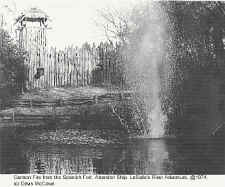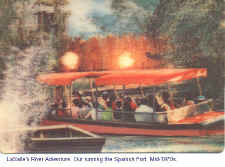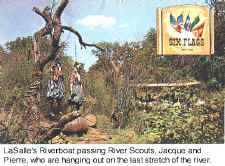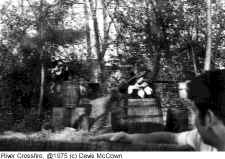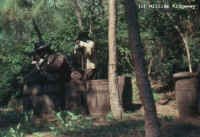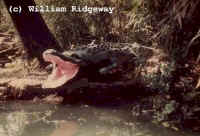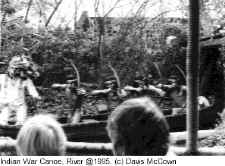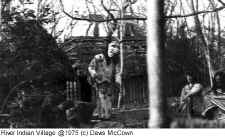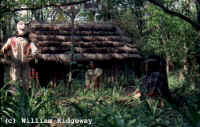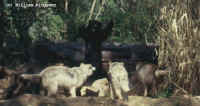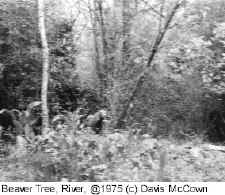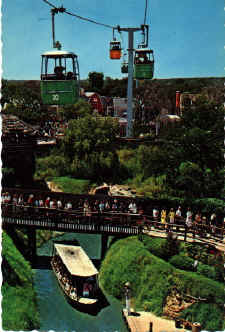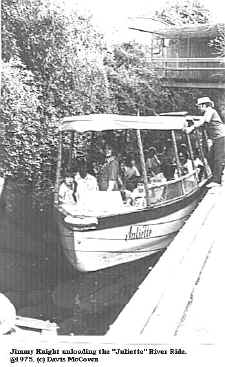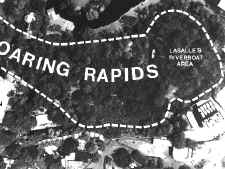Category: Status
The Ten Oldest Rides
The Ten Oldest Rides still operating in the park are as listed. Each is profiled with an article at this site. The list also corresponds with all of the rides built in the 60s which are still operational in the park.
1. The Six Flags Railroad – Opened 1961;
2. Chaparral Cars – Opened 1962;
3. The Flume Ride – opened 1963;
4. The Silver Star Carousel – opened 1963 (closed 1986 & 1987 for remodeling);
5. The Cave Ride – open 1964; rethemed 1992;
6. El Sombrero – opened 1965;
7. Runaway Mine Train – opened 1966;
8. Tower – open 1969; closed for renovations 1998
Mini-Mine Train – open 1969; closed for renovations & reconstruction 1997.
10) the Rugged Buggy, now a Loony Tunes land ride was added in 1972, in the petting zoo.The Rugged Buggy is the park’s oldest “kiddie ride”.
The next major ride to be added, which is still in the park, is the Texas Chute-out, added in 1976. The Red Baron, also now a Loony Tunes land ride, was also added in 1975.
The next major ride to still be operating in the park is the Shockwave, which opened in 1978.
NOTES:
The Flume is considered older than the Carrousel, as the Carousel was closed for two full seasons.
The Tower and Mini-mine Train are considered tied for 9th oldest, as both have been closed for a season.
(c) Davis McCown
Last Update: August 17, 2010
HARLEY QUINN SPINSANITY II
Last Year Operated: Currently Operating
Section: Gotham City
Manufacturer: ABC Rides
Other Names and Nicknames:
Harley Quinn Spinsanity was installed in 2018. Although the park had previously hosted a ride with the same name, that ride was unrelated to the newer ride using the same name.


Aquaman Splashwater (Splashdown Falls)
Last Year Operated: 2018
Section: Moden USA
Manufacturer: O.D. Hopkins Associates
Other Names and Nicknames: Splashdown Falls
Both the Flume ride and the Rolling Rapids have established that crowds in the Texas heat will appreciate a ride that gets them wet. Splashdown Falls, built in 1986 and opening in 1987, was built as the simplest ride that could accomplish this task. The ride is now named the “Aquaman”, based on one of the DC Comic Characters.
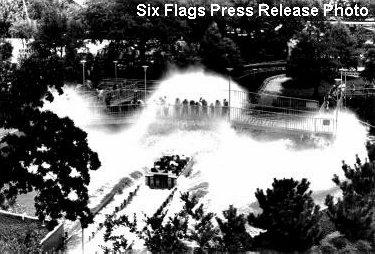
The design consists of a large lift hill, which pulls the rides’ six boats over fifty feet in the air. The boats then travel through a 180 degree curve section, where they then fall down a 45 foot drop at a 35 degree angle into a splash pool below. The twenty foot boats are each designed to hold 20 riders sitting in five rows of bench seats, for an hourly capacity of 1,800.
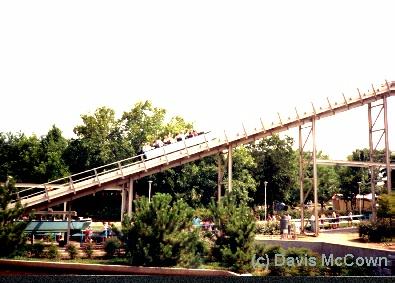
Up to twenty riders sitting in the boats five bench style rows, all experience some degree of splash. In addition, the riders could wait on the exit bridge after disembarking for the next boat to fall. Doing so, they could experience the full impact of the boats splash, virtually guaranteeing that they will be soak through and through.
The 800-foot ride uses 250,000 gallons of water, circulated around the ride by a 180 Horsepower pumping station.The ride was built by O.D. Hopkins Associates. Inc of New Hampshire.
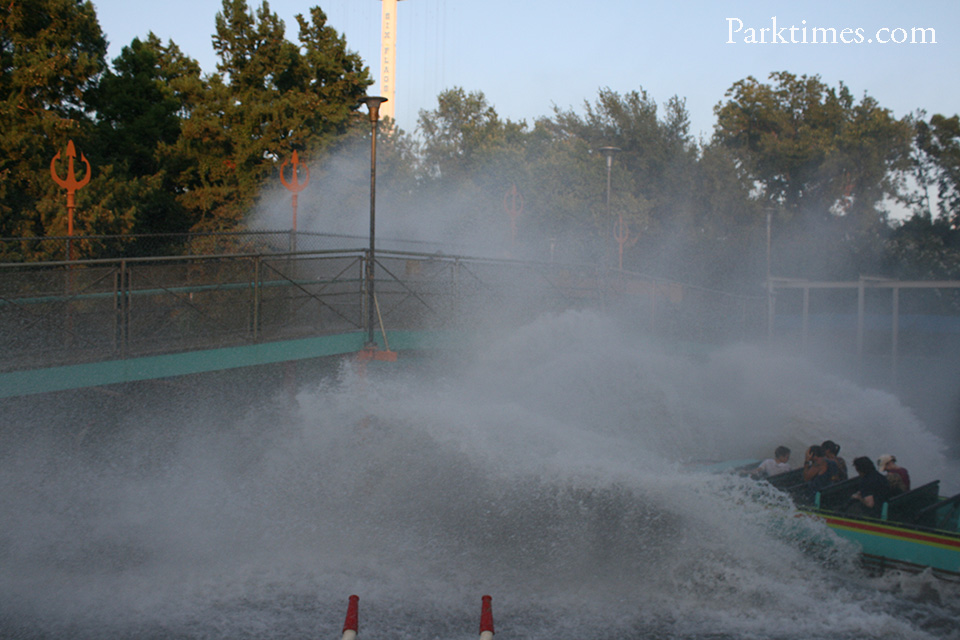
The ride’s name was inconsistent over the years. It was known as Splashwater Falls, just “Splashwater”, and Splashdown Falls in various publications The ride was later renamed the “Splashdown Reentry Test Simulation” to correspond with the retheming of the modern section to an Astronaut training center with the addition of the “Right Stuff” simulator. The final name was “Aquaman Splashdown“.
The ride was closed during the 2019 season to begin work on Aquaman: Power Wave to open in 2020.
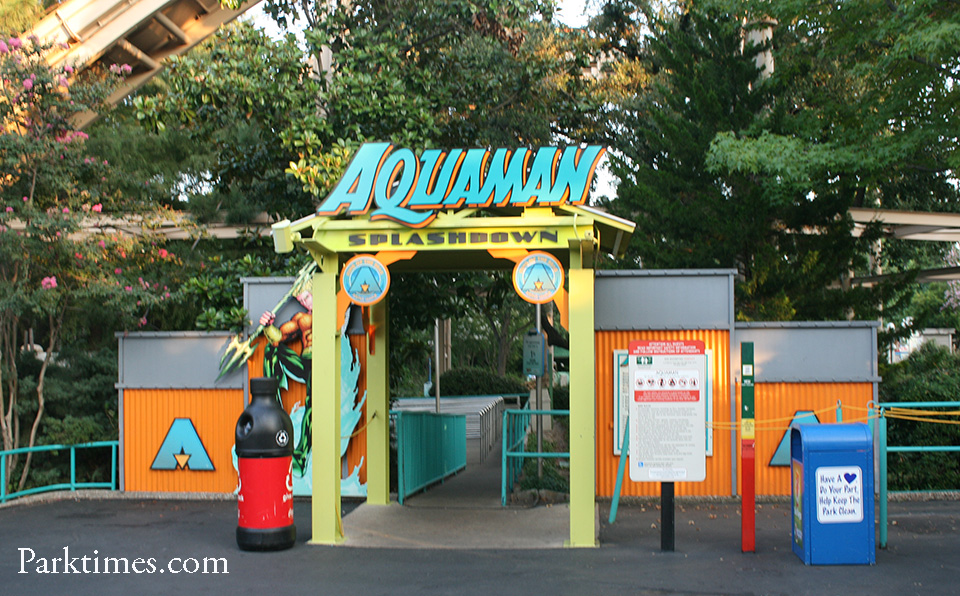
Los Conquistadors Coronado Burro Ride
Last Year Operated: 1962
Section: Spain
Manufacturer:
Other Names and Nicknames: Burro Ride
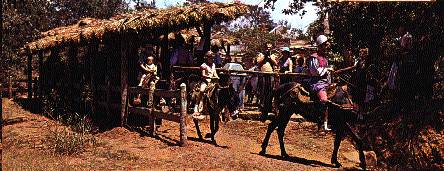
The Burro ride was a live animal ride which operated for the park’s first two seasons at what is now the site of the Log Flume Ride. For its short existence, the ride was basically the only attraction for the park’s Spanish section.
The premises of the ride was that the guest were following in the shadow of Spanish conquistador Francisco Vasquez de Coronado. The journey consisted of a mule-back descent into Palo Duro Canyon in a search for the seven cities of Cibola. The trip was guided by a host dressed as a Spanish conquistador.
Along the way, the guest viewed the restored ruins of the first Spanish Mission to Texas, the Mission San Francisco de los Tejas.
The attraction was removed at the end of the 1962 season to make way for the Log Flume ride.
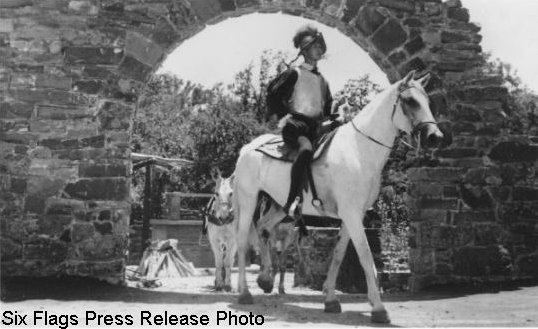
La Vibora (The Snake)
(Avalanche Bobsled)
Last Year Operated: Currently Operating
Section: Mexico
Manufacturer: Intamin
Other Names and Nicknames: Avalanche Bobsled, The Bobsled
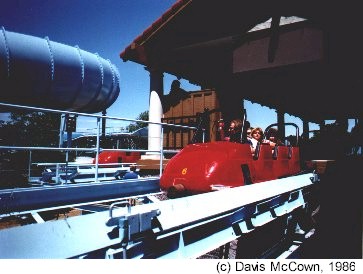
For the celebration of Six Flags Over Texas’ 25th Anniversary, the Avalanche Bobsled Ride was introduced. Located in the area of the park that had formally held the Fiesta train, the Bobslide’s new feature was that it did not ride on a track. Instead, the cars rode in a curve structure, more similar to the log ride’s flume or chute than a roller coaster track. The result of this configuration was that not every ride was exactly the same as the one before it.
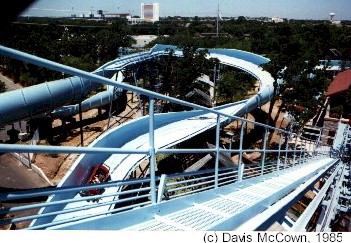
It also created the illusion that the cars could leave the flume area, creating an apprehension of danger. With a lift height of sixty feet, and a track length of 1,490 feet, the ride travels at up to 32 MPH for a ride of approximately 1 and one half minutes to ride.
While the ride was new to Six Flags over Texas, it was not new to the Six Flags’ park system, having operated at Magic Mountain from 1984 to 1987. Built by Intamin, the ride is an AG Bobsled style ride.
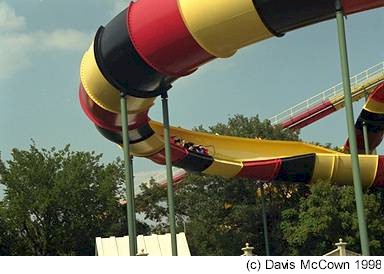
Originally painted blue, the structure was repainted in red and yellow sections to resemble the strips of a snake. It was renamed the La Vibora, Spanish for the “Viper”, brining it more closely into the theming of the Mexican section where it resides. Counting the AR as a roller coaster increased Six Flags Roller Coaster to five, the highest it had been to date. The ride was moved from Six flags Magic Mountain where it was installed in 1984.
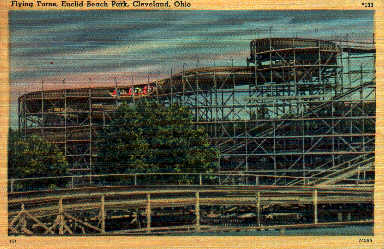
Big Bend Roller Coaster
Last Year Operated: 1978
Section: Modern USA
Manufacturer: Schwarzkopf
Other Names and Nicknames:
In 1971, Six Flags introduced the Big Bend Roller Coaster. The name “Big Bend” was a clever play on words, since it refers both to the many “bends” felt by the riders on the curving, “bending”, track, as well as Texas’ rugged Big Bend National park, with its diverse rivers, mountains and deserts.
The ride was installed five years after the introduction of the Mine Train. Six Flags purchased the Big Bend from Schwarzkopf Company of Germany, Beginning in 1974, Schwarzkopf was represented in the United States by the Intamin Company. The name INTAMIN is taken from the phrase INTernational AMusement INstallations.
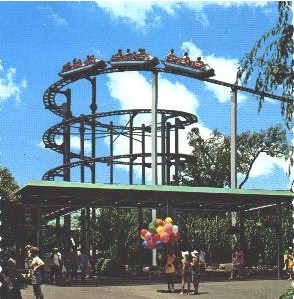
The Big Bend had many features that stand out, even by today’s standards. The roller coaster was what Schwarzkopf denoted a “Speed Racer” style coaster. Rather than bench style “side-by-side” seating, in which two riders sit next to each other, the Big Bend cars had a “toboggan” style bench seat, in which two riders straddled the seat and sit in front and back of each other, similar to the configuration of the log ride units. .
The seats were deep in the vehicle, with a high side railing. This configuration negated any need for seat belts or other restraints. Restraints were, however, added after a few years of operation.
The ride was also different in that unlike most roller coasters, which have some type of independent lift mechanism which pulls or lifts the units to the top of the lift hills. Instead, the Big Bend cars had their own motors in the units which “drove” the units to the top of the lift hills. The motors were activated by a third rail, in between the two track rails, much like an electric train.
Once over the top of the hill, the third rail ended and the trains were left to roll around the track at speeds of up to 52 mph.
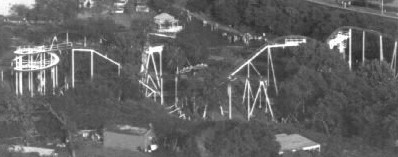
The unique lift arrangements allowed the coaster to have more visually interesting, and suspense building, spiraling style lifts, rather than the straight up hill normally associated with roller coasters.
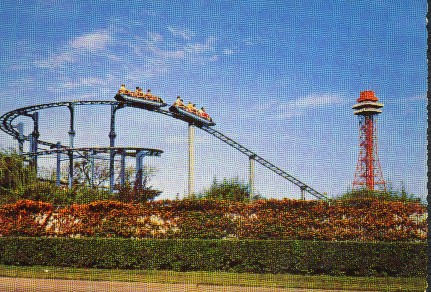
The Big Bend was built in the modern USA section, in keeping with its futuristic appearance. The dock and queue line were located along the same platform which had previously served as the Jet Set, which was removed for the installation of this ride.
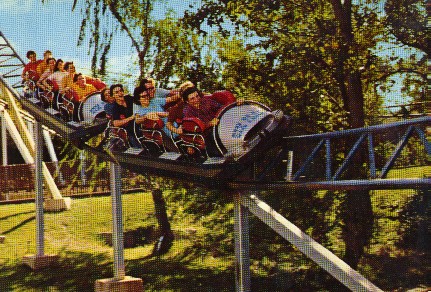
The ride had two of the spiraling lift hills, the first was 81 feet tall, significantly higher than the more established Runaway Mine train. The second was 51 feet tall. The track length was 2,876 feet, slightly shorter than the Mine train track.
The ride was an immediate success and become extremely popular.
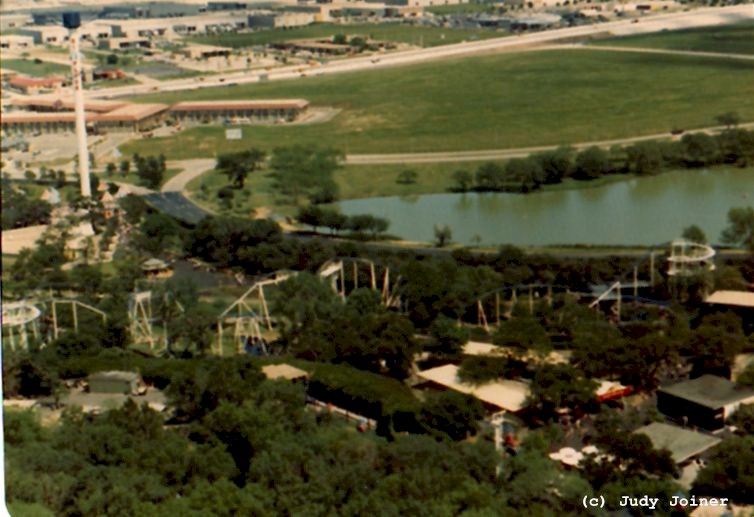
The ride was removed at the end of the 1978 season for various reasons.
Goodtime Square Games
Last Year Operated:
Section: Goodtimes Square
Manufacturer:
Other Names and Nicknames:
Good Times Square Games
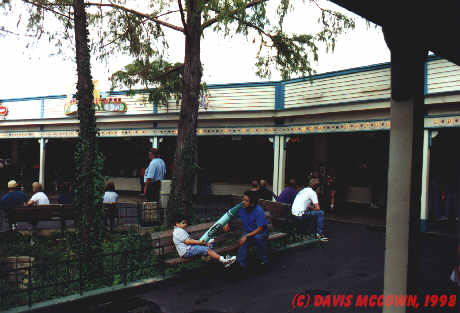
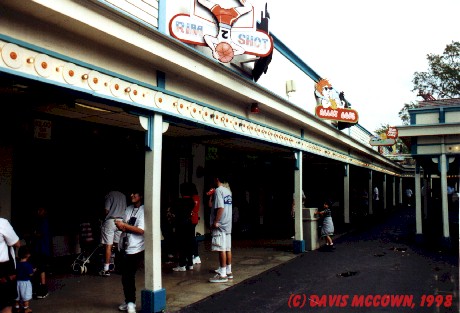
Spindletop
Last Year Operated: 1989
Section: Texas
Manufacturer:
Other Names and Nicknames:
The Spindletop was a Rotor style rotating barrel ride. It was installed in 1967. Named for the Spindletop Oil Fields, the ride was originally located at the site that is now the location of the Majestic Theater.
For the 1968 season, it was moved to a location that was then part of Skull Island. In 1969, after the opening of the Tower, the same ride location placed it at site at the end of Tower Slide in the Tower Section. The ride was not moved for the 1969 season, but the tower and slide were placed around it and Skull Island was scaled back.
In 1982, the ride was moved for the second time. It was located at the former site of the Texas Astrolift. It was removed after the 1989 season.
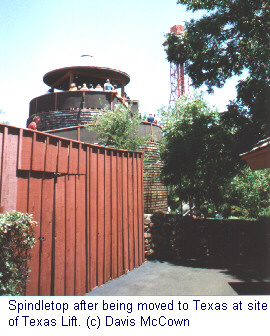
Crazy Horse Saloon
Last Year Operated: Currently Operating
Section: Texas
Manufacturer:
Other Names and Nicknames:
Crazy Horse Saloon Theater
The Crazy Horse is show saloon, complete with a small stage for western singing and can-can dancing, as well as a bar. In keeping with the park’s family friendly atmosphere, park promotional materials make it very clear that “although it is a saloon, only soft-drinks are sold there.”

The theater is rather small, with room for a small stage, a piano, and several tables for the guests. Four or five performers in saloon costumes sang period songs, danced on the stage and mingled with the guests.
In keeping with the park’s historical emphasis, the entire back bar is an actual antique bar from an 1890 vintage saloon. Carpenters crafted a new front bar to conform to the original. Antique tables and chairs were acquired from a saloon in Little Rock, Arkansas.
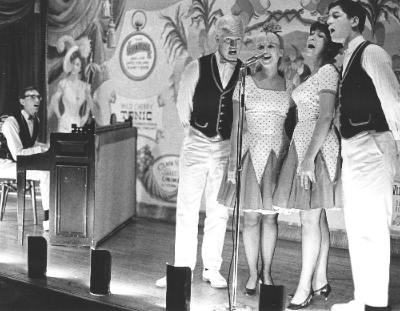
While there are shows and performers in all of the sections of the park, the Crazy Horse is unique in that is the park’s first indoor show. It continued as the park’s only indoor show for the first seven years of operation, until the much larger Southern Palace replaced the amphitheater in 1968. It is also the longest running theater in the park, operating continuously since the first season. Inside, the singing and dancing showgirls still entertain visitors.

Being the only indoor theater, the Crazy Horse also served as an employee auditorium, being used for orientation sessions, training, and other meetings
The Crazy Horse Saloon opened with the Park in 1961 and is the oldest theater in the park.

